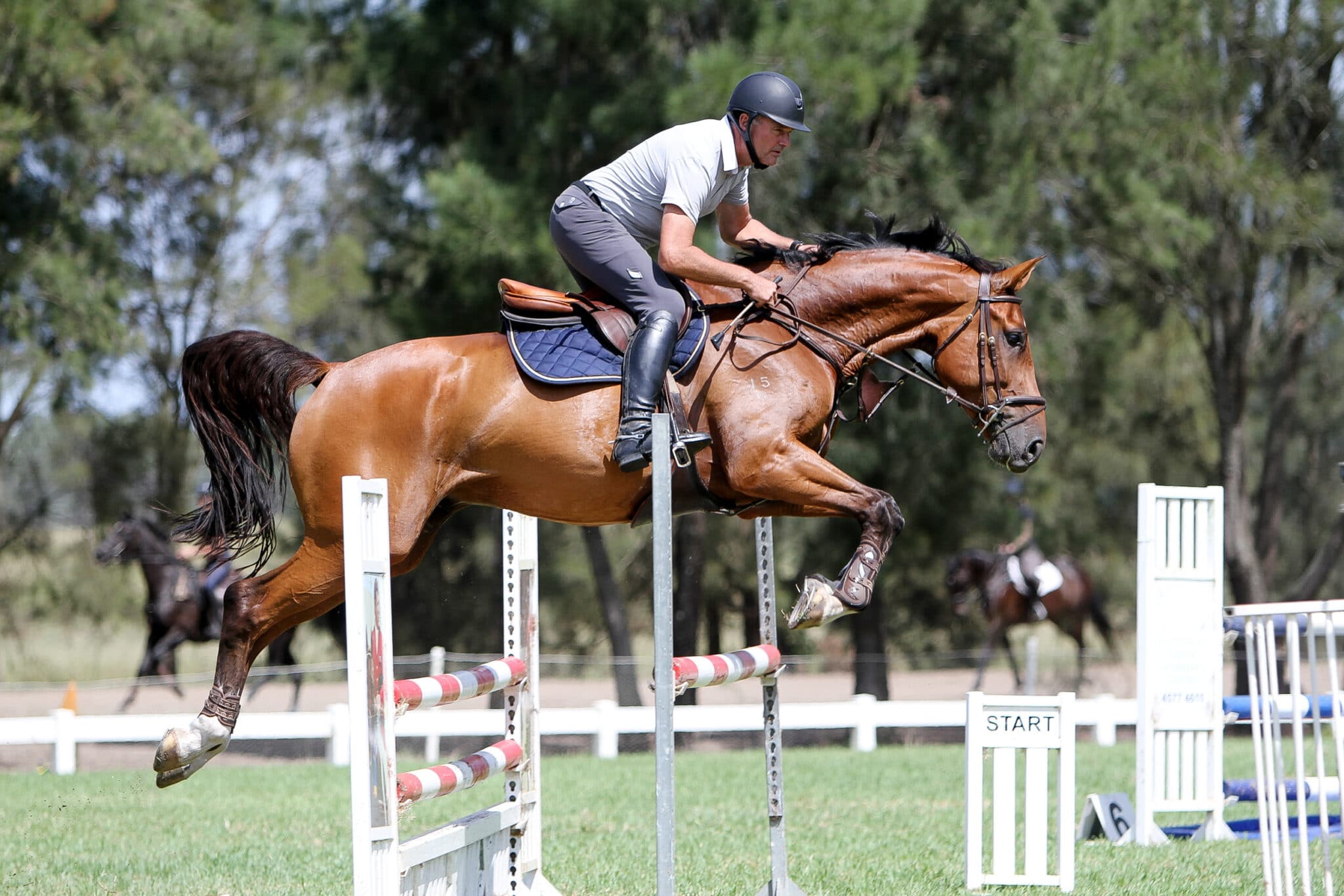A seasoned professional with over 30 years’ experience in eventing and show jumping at national and international level, Robert Stewart is an EA Accredited Level 3 Jumping Coach, Coach Educator, Course Designer, and Managing Director of Stewart Equestrian.
Q1: How old were you when you started riding?
A: I was nine.
Q2: Was your family horsey?
A: My father was a jackeroo as a young man, so he rode after stock. My older brother and sister rode but I was the only one to really continue after Pony Club.
Q3: Where did you grow up?
A: My first memories were living in Tamworth. My family moved to Brisbane when I was 10, where I began riding competitively. At 18 I moved to Sydney.
Q4: Where did your jumping start?
A: At Northern Suburbs Pony Club as a 12-year-old. I started eventing and show jumping in Pony Club and at local Ag shows.
Q5: When did you start to learn the finer points of riding?
A: My early riding was with a friend, Sue Meikle (now Wetherill), whose father Tom rode in Winton, and I learned about dressage and jumping from Tom who trained with two legends – Franz Mairinger and Karl Jurenak.
Q6: Who were your mentors in the early days?
A: Ron Patterson, not that I had much direct help from Ron, but he taught my lifelong friend David Green and I watched a lot of his lessons. Ron raised our equestrian consciousness. I was then fortunate to work for the iconic Tina Wommelsdorf. From there I started jumping with George Sanna, becoming, I think, his first working pupil.
Q7: How did you afford to compete when you weren’t a well-known professional?
A: By working full time and spending all my wages to live and breathe horses and pay for my sport.
Q8: Which 3D event did you find the toughest?
Werribee 1996. It was supposed to be the final Olympic trial for Australian based riders, which didn’t eventuate because the XC was a little underbuilt. It wasn’t that which made the event the toughest though. I lost my best horse – a horse I believe was a medal horse – which was sold from under me at the conclusion of the event. That was pretty tough.
Q9: And the toughest show jumping Grand Prix?
A: Possibly the Wolfgang Veld courses at Horseworld World Cup, very technical and careful, the Oz Champs at Werribee, and the Asian games were also tough as I had a horse doing the 3DE as well as the show jumping program at the same venue.

Q10: How did you get your horses fit in the days of long format 3DE?
A: Close to my property was a large area with flat and undulating country where I was able to do my gallops and interval training with ample warm up and cool down time on the ride to and from. I was very disciplined about my times and speeds then, and also in my observations around the fitness indicators.
Q11: What’s your vision for Sydney Jump Club in your new role as club president?
A: My hope is that we can deliver value to the 650 odd members of the club. Our members spread across all levels from 45cm to Grand Prix and each deserves to get value, good facilities and surfaces, as well as first rate courses and equipment over well-built and appropriate tracks.
Q12: Who was your best horse and why?
A: My unicorn was Kavanagh, a grey Thoroughbred gelding I was fortunate enough to own from a 9-year-old. He had evented to Intermediate (3* now) before I owned him, but was agoraphobic so he was quite difficult to ride in cross country as he got scared in open spaces. He had scope to burn and was endlessly careful and so generous. He liked me and the way I rode him and I worshipped him.
Q13: If you specialised in a different equestrian area what would it be and why?
A: As I age I’m enjoying the breeding and early education of young performance horses, particularly jumpers. So starting them off with their basic training on the flat and their early jumping experiences with poles and cavaletti.
Q14: Favourite breed of horse?
A: Thoroughbreds and Warmblood x TBs, which is what I breed. I figure they have to be scopey, careful and with enough blood to be fast, because classes are getting so fast to win now.
Q15: What’s the aim for Trinity Sporthorses, your new venture?
A: To continue to breed top shelf modern sporthorses for show jumping and eventing, and to enjoy seeing them develop in the sport.

Q16: If you had to stop riding completely, what would you do?
A: I would continue breeding if finances allowed, and continue to train horses and riders from the ground.
Q17: What can people learn from horses?
A: So much. How to be selfless and consider the horse before themselves, a valuable life lesson. To care for another living animal that cannot communicate in the same language, and to read horse behaviours and recognise how to respond to them appropriately to get the best possible outcome. And to be surprised by their tolerance of our ignorance, their willingness to partner with us even when we don’t get things just right.

Q18: If you could have any horse past or present which one would it be?
A: A young Kavanagh or probably Gem Twist.
Q19: Is there anything you are looking to improve in your own skill set?
A: Everything and always.
Q20: What’s something all riders can work on regardless of discipline?
A: Their observation and horsemanship, their horse handling and understanding skills, and the basic training of young equestrian horses.



